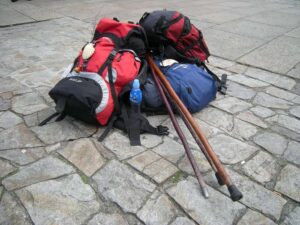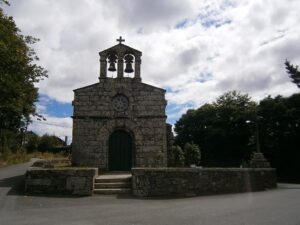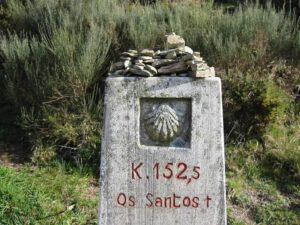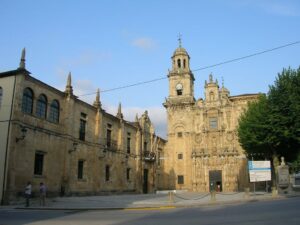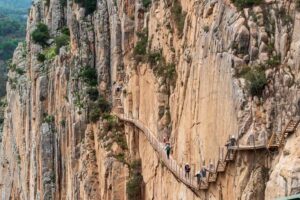When talking about the Camino de Santiago there are many things that can come to mind: The wonderful journey, different routes, hundreds of pilgrims and new friends to meet, but above all a personal and spiritual renewal.
Whether for religious reasons or a mere purpose of physical condition, doing the Camino de Santiago, with one of the organizing agencies of the Camino de SantiagoIt is a wonderful experience. Therefore, fully soaking up everything that it encompasses will allow you to enjoy it even more.
To do this, you need to be aware of all the symbols that surround one of the most popular pilgrimage routes in the world. In this way, the bond will be stronger and the experience more emotional.
Índice de contenidos
Know the symbols of the Camino de Santiago for a better experience
Just as there are phrases, sayings and some points of interest that you cannot miss visiting, there are also symbols or signs of the Camino de Santiago. In fact, this journey is not understood without their presence. Therefore, before starting this new adventure, it would be a good idea to get to know them a bit.
Among the most relevant are:
Scallops
Also known as scallop or shell, it is one of the most popular Camino de Santiago symbols. We can say that It serves as identification of the pilgrims who are making the journey.
It is the hard part of the mollusk, extremely common on the Galician coast. In the past, pilgrims used them to drink water along the way. When they returned home, they took her as sign of completing the path, for which it became a reference on this journey.
Today, it is normal to see pilgrims with these objects hanging from the neck of their backpacks. In addition, they are also part of the signs of the Camino de Santiago in the form of litter bins, fountains, souvenirs, milestones (which we will also talk about) and even a church.

cairns
A cairn is a stone milestone that was used in the past to measure distances. In this case, from the determined point of the route to the Cathedral of Santiago de Compostela.
The milestones of the Camino de Santiago are of two types: The official, who guide the pilgrims, and those who indicate detours to nearby monuments or places of interestas well as complementary routes.
Depending on the area where you are, they can vary both in color and size. In most cases they are made of granite. They tend to be more common in Galicia, where you can find one every 500 meters.
yellow arrows
The arrows of the Camino de Santiago They are all yellow and you can find them even in the least expected places: From ancient walls to rocks and bridges.
It is one of the signs of the Camino de Santiago more traditional. They have been used throughout history and are present on all routes.
Its popularity began in the 70s.. By then, the priest Elías Valiña began to paint them along the Camino Frances, especially in the final stretch of the on the way from Sarria to Santiago, to guide the pilgrims. Since then, they have spread far and wide on the trail.
Pumpkins
One of the symbols of the Camino de Santiago that dates from the Middle Ages. At that time, pilgrims wore the gourd hanging from their belt or staff. The purpose of this Carry water and always keep it cold.
Although currently it is not so popular, you can see a few, especially in backpacks.

Drone
A staff is a kind of wooden stick. It serves as support point for pilgrims, especially on steep terrain, such as climbs.
In the past, it was also used to hang some accessories that pilgrims carried, such as gourds or shells. It also served as a method of defense against wild animals. Today, many pilgrims have left behind the wooden staff to replace it with trekking poles.
Cross of Santiago
Another of the symbols of the Camino de Santiago with the greatest tradition. It is a latin cross in red that simulates a sword whose hilt is shaped like a fleur-de-lis. This is a symbol of spotless honor used by knights in the Middle Ages.
Some say that this cross originates from the time of the crusades, when knights carried these crosses on the road with rather sharp bottoms. This design allowed them to easily stick them into the ground to make their daily prayers.
credentials
This is such an important document that it is considered the Passport or ID of the pilgrim. You must claim this sheet in your city of origin on the Camino de Santiago, fill it in with your personal data and stamp it daily in the official places you visit.
In addition to being a kind of certificate of having completed this wonderful route, it also It will be used to claim your Compostela.

The Compostela
Although its official name is Compostela, many call it Compostela. It is a document that credits pilgrims with having completed the Camino de Santiago by any of its routes.
This credential is delivered by the Cathedral of Santiago de Compostela and you pick it up at the Pilgrim’s Office located inside the temple. It is in the form of a scroll and is written in Latin. Its origin dates back to the XNUMXth century. when she was known as evidence letter.

